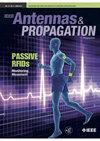Unfolding the History of the Folded Dipole [Historically Speaking]
IF 5.7
4区 计算机科学
Q2 ENGINEERING, ELECTRICAL & ELECTRONIC
引用次数: 0
Abstract
One of the most common antenna elements is the folded dipole. It is used as the driving element in many television receiving arrays. It was invented in the 1930s by Philip S. Carter as television services came into operation. Subsequently, several people contributed to its refinement, including Rudolf Guertler. This article describes its invention and refinements made to it over the years and the backgrounds of Carter and Guertler.展开折叠偶极子的历史[从历史上讲]
最常见的天线元件之一是折叠偶极子。它被用作许多电视接收阵列中的驱动元件。它是由菲利普·s·卡特(Philip S. Carter)在20世纪30年代电视服务开始运作时发明的。随后,几个人对它的改进做出了贡献,包括Rudolf Guertler。这篇文章描述了它的发明和多年来对它的改进,以及卡特和格特勒的背景。
本文章由计算机程序翻译,如有差异,请以英文原文为准。
求助全文
约1分钟内获得全文
求助全文
来源期刊

IEEE Antennas and Propagation Magazine
工程技术-工程:电子与电气
CiteScore
7.00
自引率
5.70%
发文量
186
审稿时长
3 months
期刊介绍:
IEEE Antennas and Propagation Magazine actively solicits feature articles that describe engineering activities taking place in industry, government, and universities. All feature articles are subject to peer review. Emphasis is placed on providing the reader with a general understanding of either a particular subject or of the technical challenges being addressed by various organizations, as well as their capabilities to cope with these challenges. Articles presenting new results, review, tutorial, and historical articles are welcome, as are articles describing examples of good engineering. The technical field of interest of the Magazine is the same as the IEEE Antennas and Propagation Society, and includes the following: antennas, including analysis, design, development, measurement, and testing; radiation, propagation, and the interaction of electromagnetic waves with discrete and continuous media; and applications and systems pertinent to antennas, propagation, and sensing, such as applied optics, millimeter- and sub-millimeter-wave techniques, antenna signal processing and control, radio astronomy, and propagation and radiation aspects of terrestrial and space-based communication, including wireless, mobile, satellite, and telecommunications.
 求助内容:
求助内容: 应助结果提醒方式:
应助结果提醒方式:


